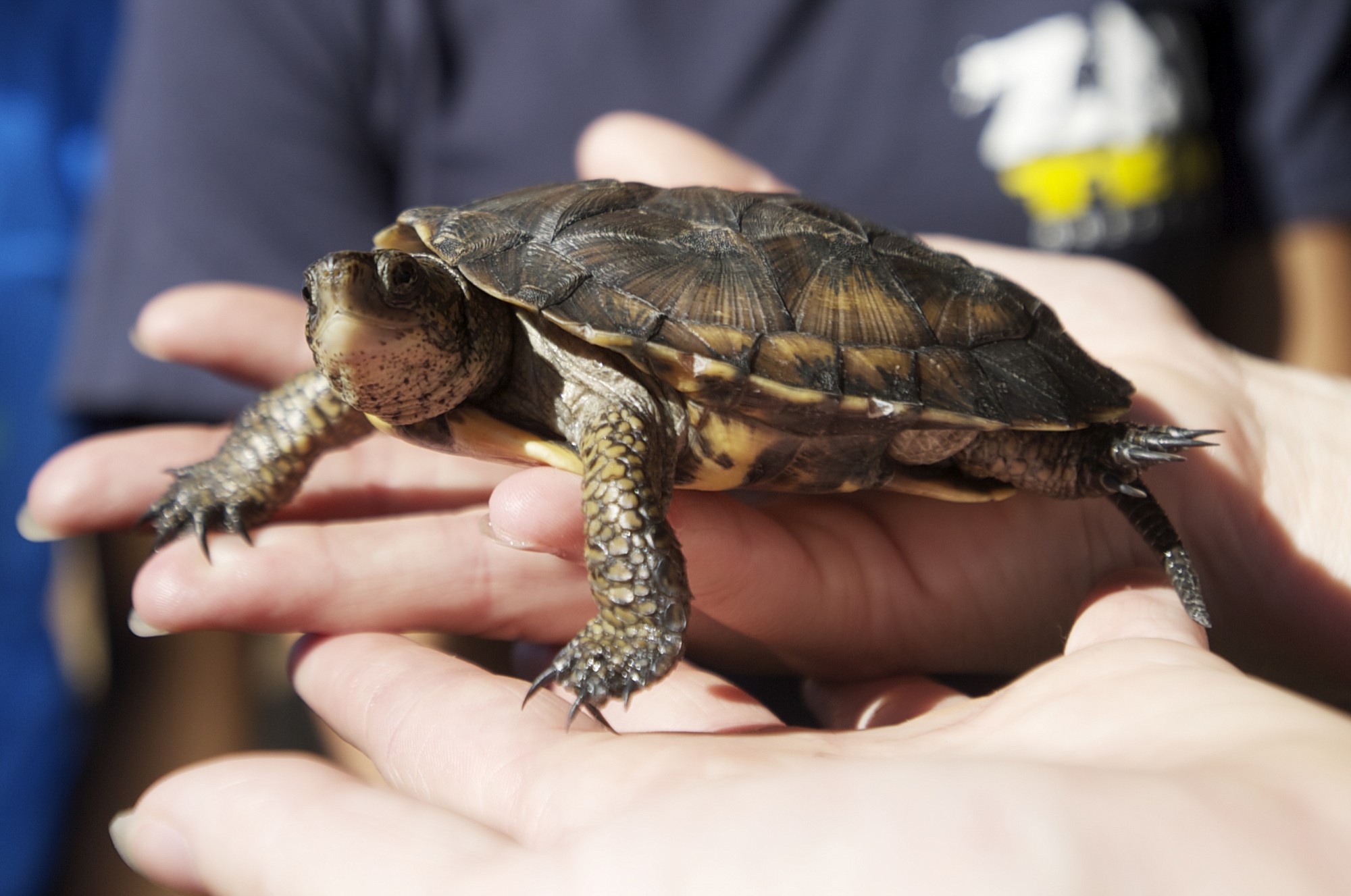Every year, a batch of western pond turtles is let loose in secluded locations in the Columbia River Gorge. The release often happens with plenty of fanfare as volunteers, invited youth and media look on.
Then the crowd goes home, and the real test begins. The turtles are on their own.
Fortunately, the endangered animals are usually up to the task, according to the people who rear them in captivity.
“They’re pretty hard-wired,” said Amy Cutting, an animal curator with the Oregon Zoo in Portland. “They don’t learn from their parents how to behave. It’s pretty much intrinsic, instinctual.”
For more than two decades, the Washington Department of Fish and Wildlife, Seattle’s Woodland Park Zoo and other partners have teamed up to boost the numbers of a species that was on the brink of disappearing in the region not long ago.
When the program started in the early 1990s, there were fewer than 100 western pond turtles in Washington, according to the Oregon Zoo, which joined the effort in 1998. Today in the Columbia River Gorge, where the program is focused, there are as many as 800 turtles in four different populations, said David Anderson, a district wildlife biologist with WDFW. Exact numbers are difficult to pinpoint, he added.
Almost 25 years in, the Western Pond Turtle Recovery Project has been a success by most accounts. But is there an end point? Can the effort ever declare victory?
“With any species recovery program, the goal is a self-sustaining animal population without human intervention,” Cutting said.
Western pond turtles in the Gorge aren’t there yet, Anderson said. One target is having four separate populations of at least 200 animals, he said. The four current populations — three in Skamania County, one in Klickitat County — haven’t reached that level yet. And there are other considerations than just numbers, Anderson said.
“We want to have an evenly distributed number of younger and older turtles in the population,” Anderson said.
The program has helped the species rebound in the region by plucking hatchling turtles from the wild, then raising them for 11 months in the safe confines of captivity. With controlled summer-like conditions year-round, the animals feed and grow faster than they normally would. When the juvenile turtles are large enough to fend for themselves, they’re released back into the wild.
The Oregon Zoo and Woodland Park Zoo take the role of raising the animals while they’re in captivity. The task of monitoring and tracking the turtles falls to WDFW, Anderson said.
The turtles’ survival rates have been very high after release, according to the Oregon Zoo. But some mortality is inevitable. Among the biggest threats to the turtles are predators like bullfrogs and loss of habitat — likely the main reasons their numbers declined in the first place, U.S. Forest Service spokesman Leanne Veldhuis said in an email.
The turtles have also had to cope with disease, Anderson said. WDFW officials earlier this month trapped and evaluated some turtles affected by a disease that creates small lesions on the shell, he said.
WDFW also conducts periodic population estimates as part of its monitoring efforts, Anderson said. Turtles are often marked so they can be identified and observed at later visits.
If the population were declared healthy, officials would go through a de-listing process to remove the western pond turtle as a threatened species.
For now, it remains a work in progress. But Anderson said the turtle restoration program has notched some notable achievements. The turtles are reproducing, including at sites where they were completely reintroduced years ago, he said. And large swaths of habitat have been protected in the Gorge, and insulated from disruption. (Officials are often coy about the exact location of releases when they happen.)
This year’s release happened in May, which is earlier than in past years. Officials also caught small hatchlings at that time, and may release them later this year — a faster turnaround that would be a first for the program, Anderson said.
“The less amount of time we’re handling them, the better,” he said.
The effort has produced good results over the years largely because each player has excelled at a specific role, Cutting said. The zoos take the lead on rearing the animals in a controlled setting, while the WDFW concentrates on monitoring and tracking them in the wild.
“I think we’ve really been able to put together a stronger partnership than if either group tried to do it themselves,” Cutting said.




